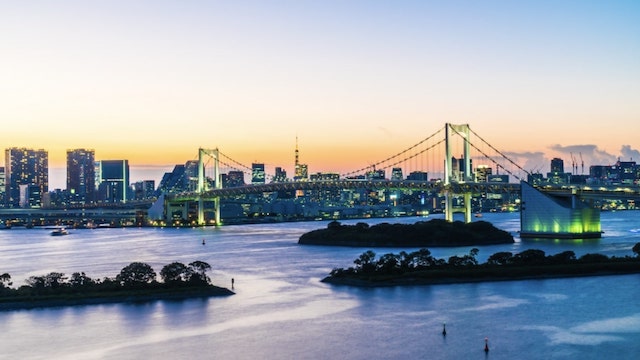Nov 18 (News On Japan) - Ever wonder how buildings in Japan stay safe from strong winds, heavy rain, and earthquakes?
Metal buildings are helping cities grow taller and stronger. They last a long time and need less fixing. You can see them in homes, offices, and train stations.
Their steel frames let builders make shapes that wood or concrete cannot. Metal also keeps buildings safer during storms and fires.
Want to see how these strong, shiny buildings are changing Japan's cities and daily life? Let's dive in.
Earthquake Resistance
Japan is one of the countries most affected by earthquakes. Buildings need to stay strong and safe when the ground shakes. Metal frames are strong but can bend a little without breaking. This helps houses, offices, and towers survive even big earthquakes.
Unlike wood or concrete, metal can take in shocks and spread the force across the building, which lowers damage. People feel safer living or working in these buildings because they know metal lasts a long time.
For strong metal building options, more information can be found at butlerbuildingparts.co/.
Typhoon Strength
Typhoons are another common threat in Japan. These storms bring very strong winds and heavy rain, which can damage buildings made from weaker materials. Steel structures can handle these storms much better.
The strong metal holds the building together, preventing it from collapsing or losing parts of the structure. This makes metal buildings safer for the people inside and the surrounding area.
Cities that use metal construction are less likely to face disasters caused by storms. Strong buildings reduce repair costs and provide peace of mind to everyone living or working nearby.
Long-Lasting Buildings
One of the biggest advantages of metal is that it lasts a long time. Wood can rot, warp, or be eaten by insects, and concrete can crack over the years. Metal, on the other hand, stays strong for decades with minimal repair.
This makes metal buildings a smart investment. Homes, offices, and public buildings built with steel or other metals do not need frequent maintenance, saving money and time.
Long-lasting buildings also contribute to the city's overall durability. People can enjoy safer, stronger buildings that remain reliable for generations.
Fire Safety
Fire is a serious danger in crowded cities. Wooden buildings can catch fire easily and spread flames quickly. Steel does not burn, which makes metal buildings much safer during fires.
Even if a fire starts nearby, metal frames keep the structure stable longer than other materials. This gives people more time to escape and firefighters a better chance to control the fire.
Fire safety is a key reason why many modern buildings in Japan use steel. Protecting lives and property is always a priority, and metal architecture helps achieve that.
Modern Designs
Metal allows architects to create bold and modern designs that are not possible with wood or concrete. Architects can build curved shapes, tall towers, and unusual structures that make the city look futuristic.
Sleek metal surfaces and glass create a clean, modern feel. Many new homes, offices, and public buildings in Japan use these designs.
Metal construction gives designers more freedom, helping them create buildings that are not only safe and strong but also visually striking. Cities look modern, unique, and creative because of metal architecture.
Lightweight Structures
Metal is lighter than concrete but very strong. This is important in crowded cities where buildings need to be tall without putting too much pressure on the ground. Lighter structures reduce the risk of foundation problems and make construction easier.
Builders can safely create taller towers and large buildings in areas with limited space. Lightweight metal structures also make it easier to add extra floors or extensions in the future. This flexibility is a key advantage for urban development, allowing cities to grow without overloading the land.
Space Efficiency
Strong metal frames mean fewer interior walls are needed. This allows for open, spacious rooms in homes, offices, and commercial buildings. Large open spaces feel more comfortable and flexible for different uses.
Offices can have open layouts, shops can display products better, and homes can feel bigger even if the footprint is small. Metal architecture helps make the most of every square meter, which is very valuable in dense Japanese cities. People can enjoy more freedom in arranging furniture, workspaces, or living areas.
Eco-Friendly Options
Metal is a sustainable choice because it can be recycled. Old steel can be melted and reused for new buildings, which reduces waste. Using metal in construction supports environmentally friendly building practices.
Recycling metal also reduces the need to mine new materials, saving natural resources. Some modern buildings even use a combination of recycled steel and energy-efficient designs to reduce their environmental footprint.
Eco-friendly metal construction helps Japan balance growth with care for the planet, creating cities that are safer and greener at the same time.
Fast Construction
Metal buildings can be built faster than traditional ones because many parts are made in factories. Prefabricated metal pieces are transported to the construction site and assembled quickly. This speeds up construction, reduces mistakes, and lowers costs.
Fast building times are very useful in growing cities or areas that need urgent infrastructure. Prefabrication also allows for better quality control since parts are made in controlled factory settings.
Fast construction with metal helps Japan meet the demands of urban growth while maintaining strong and safe structures.
Urban Skyline Impact
Tall metal buildings are changing the look of Japan's cities. Skyscrapers and modern homes made from steel create a shiny, futuristic skyline. These buildings show the combination of safety, efficiency, and style.
Metal structures are not only functional but also add to the beauty of urban areas. People enjoy cityscapes that are modern, bold, and safe.
The skyline reflects progress, showing how technology and design work together to shape the future. Metal architecture is transforming Japan's urban identity and setting a standard for smart, resilient cities.
Shaping the Future: Japan's Metal Structures
Metal buildings are changing Japan's cities, making them safer, stronger, and more modern. They can resist earthquakes and fire, protecting people while letting architects build bold, new shapes.
Light steel lets cities grow taller, and open spaces inside make life easier. Metal lasts a long time, cuts repair costs, and helps the environment.
Tall skyscrapers and shiny homes are not just useful-they make the skyline look amazing. Metal buildings are shaping a future where safety, style, and smart design work together.
Did you find this article helpful? You can check out our website for more awesome content like this!















